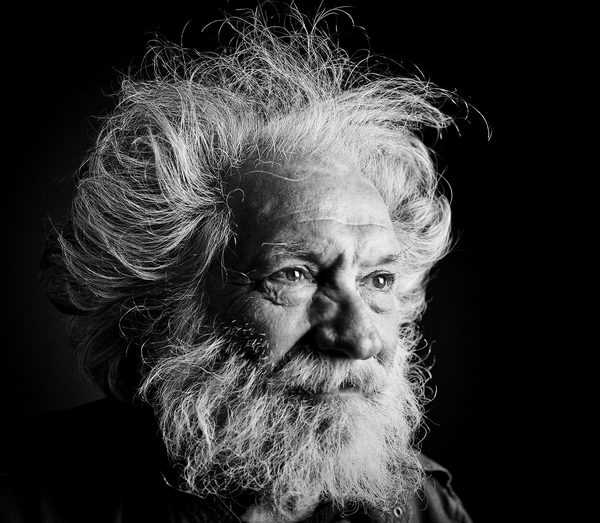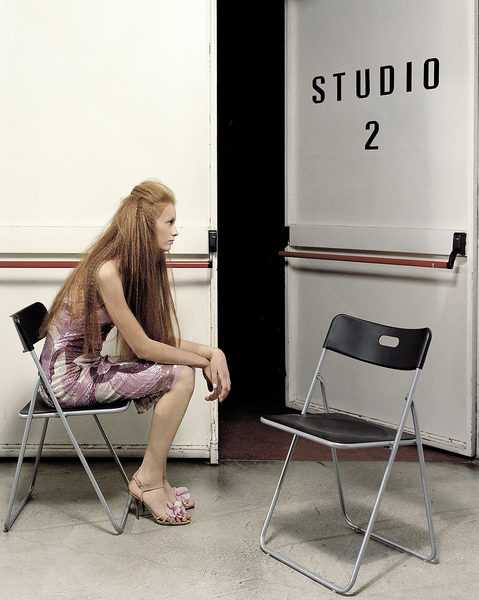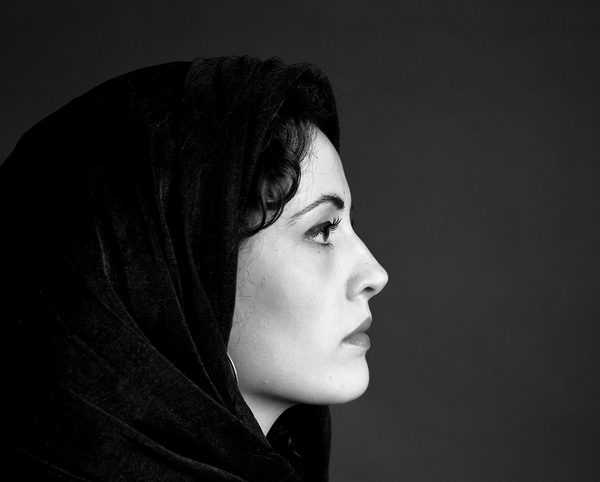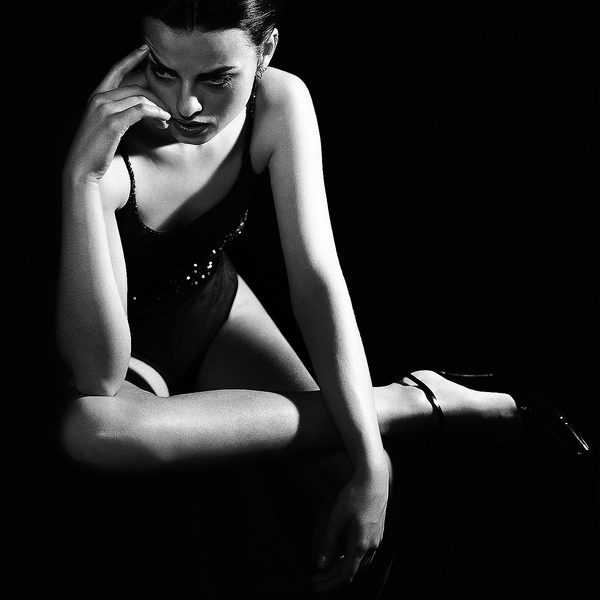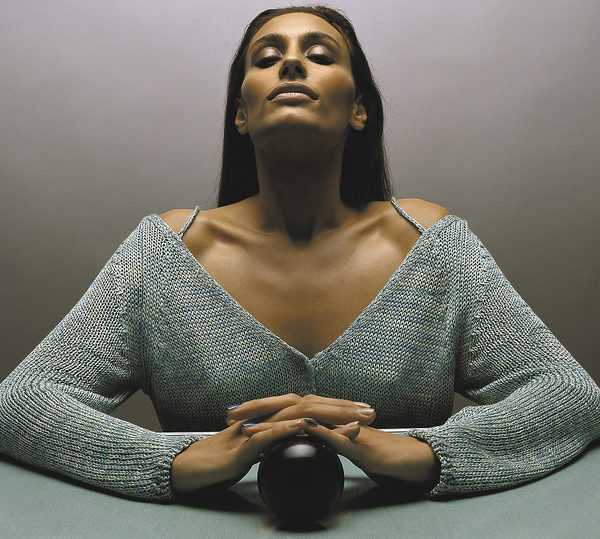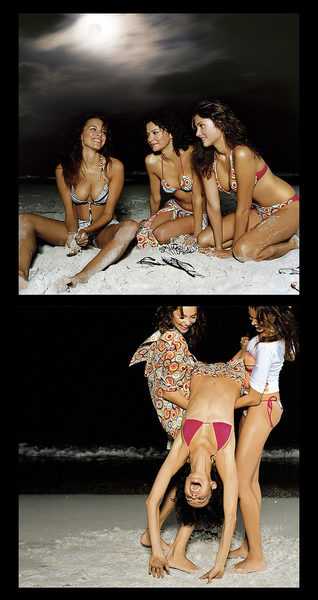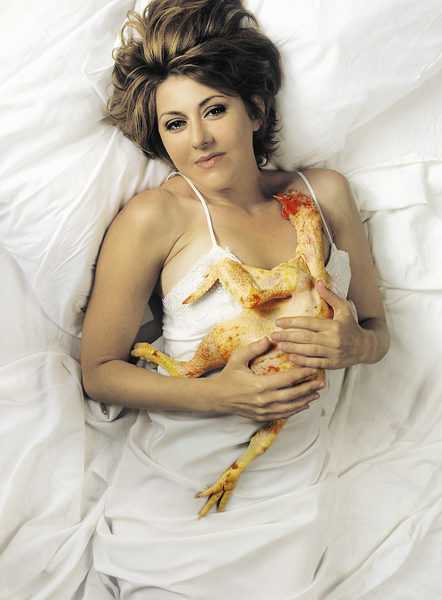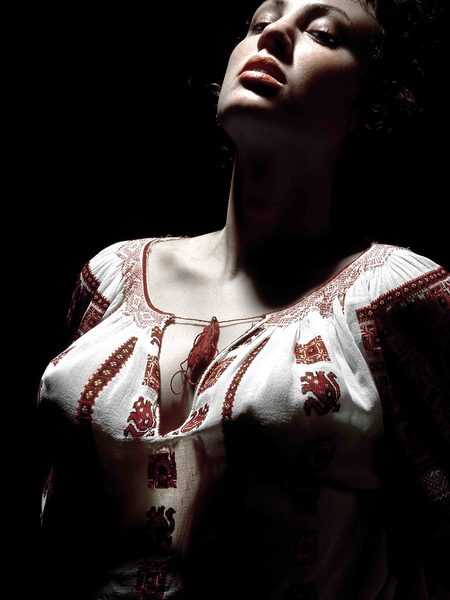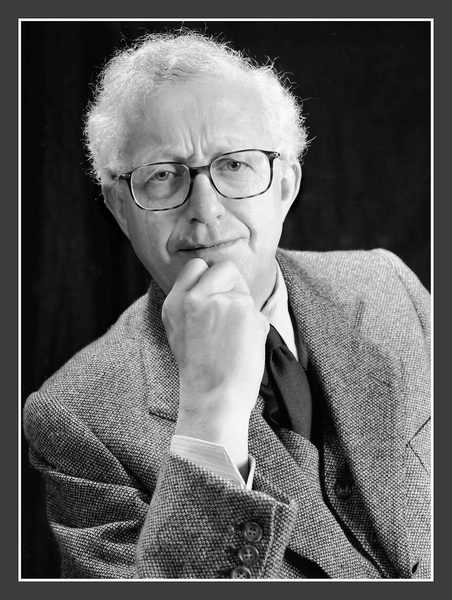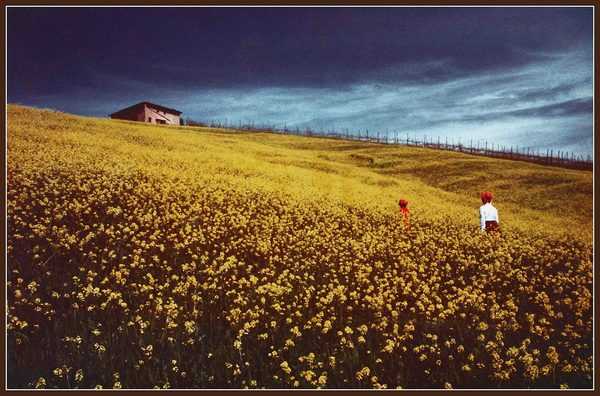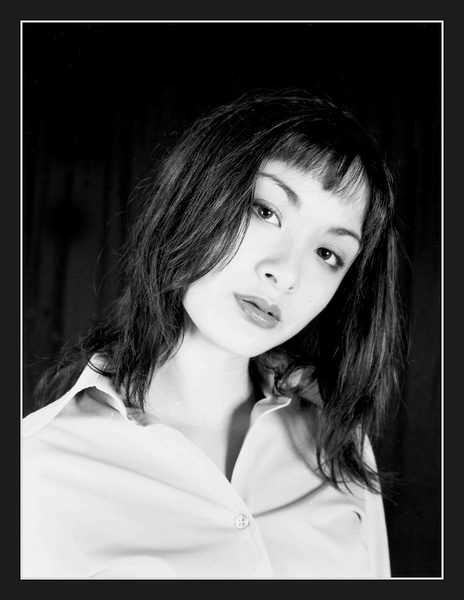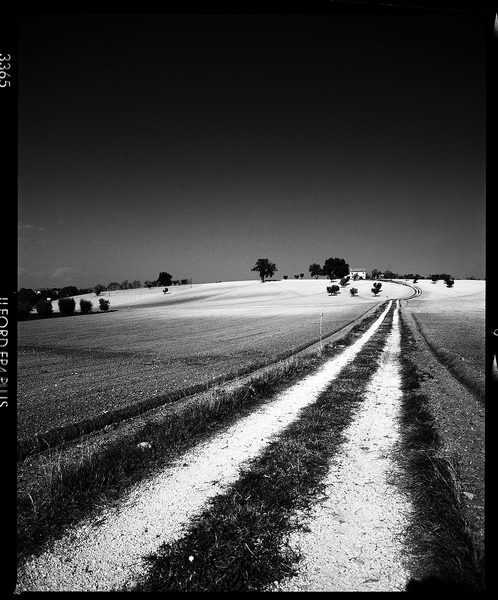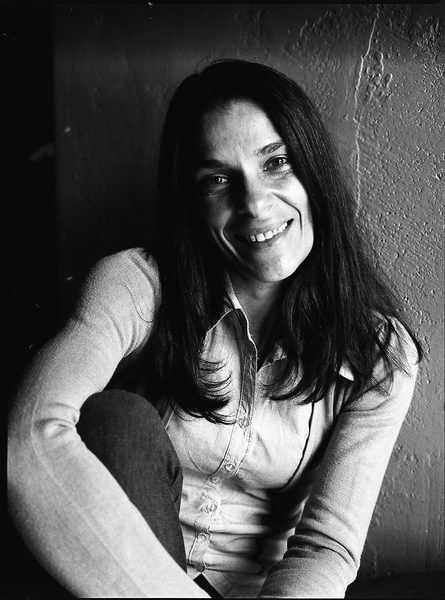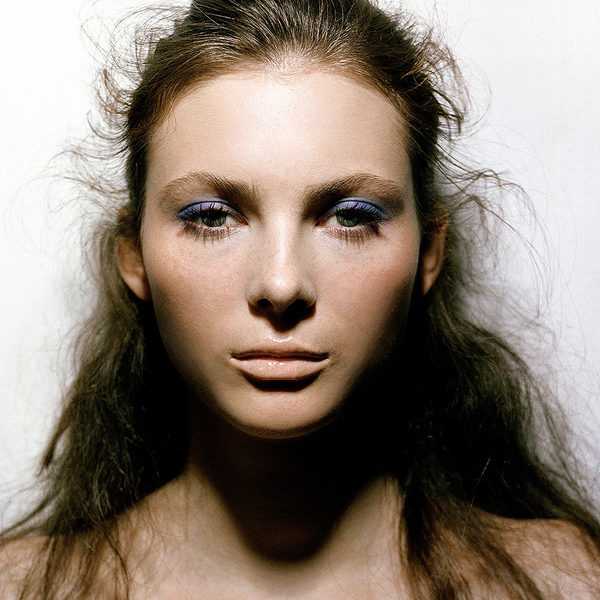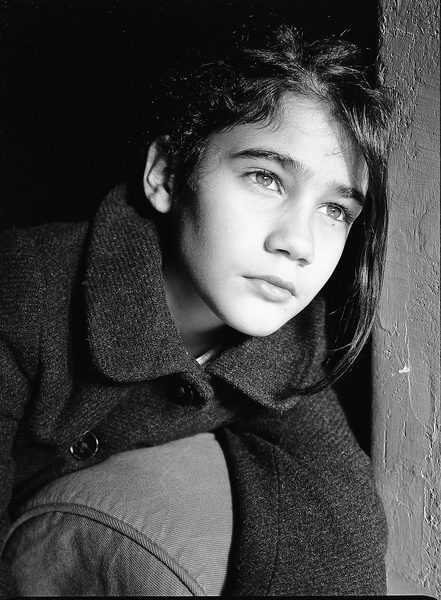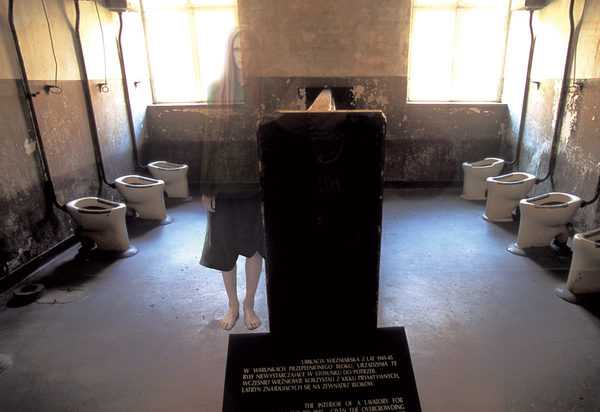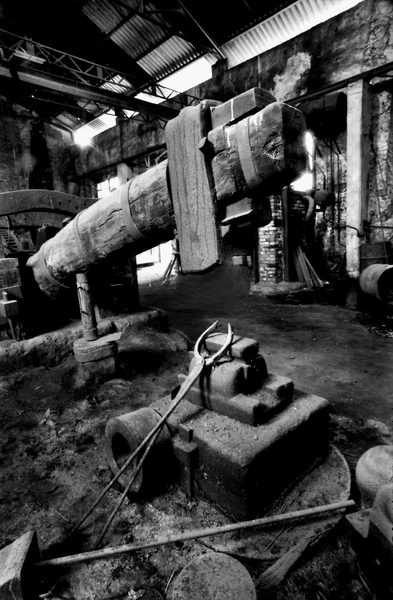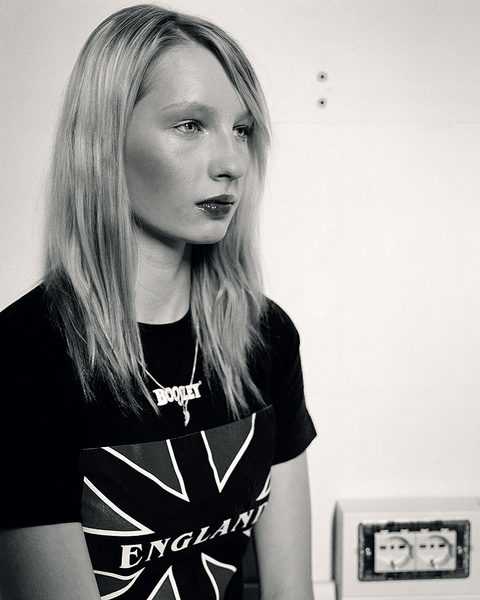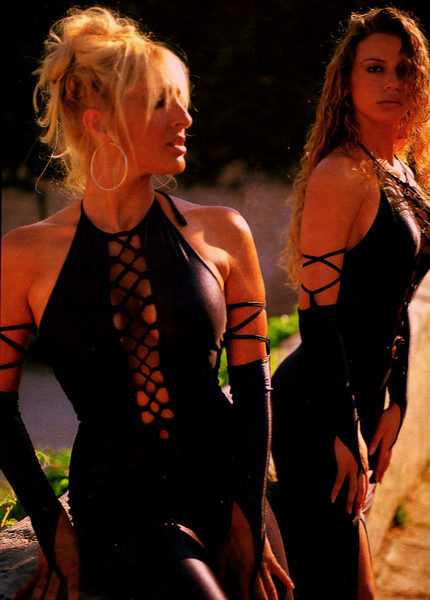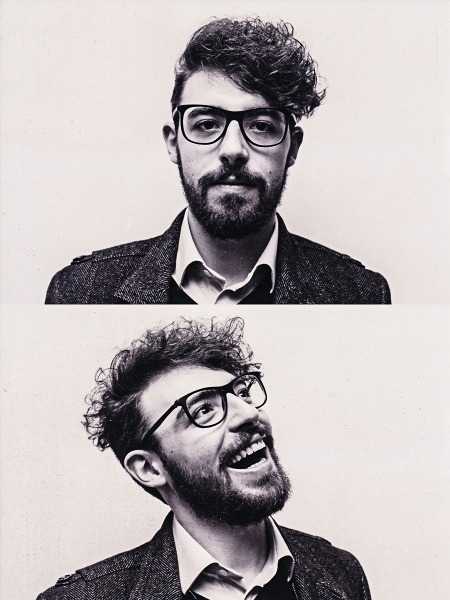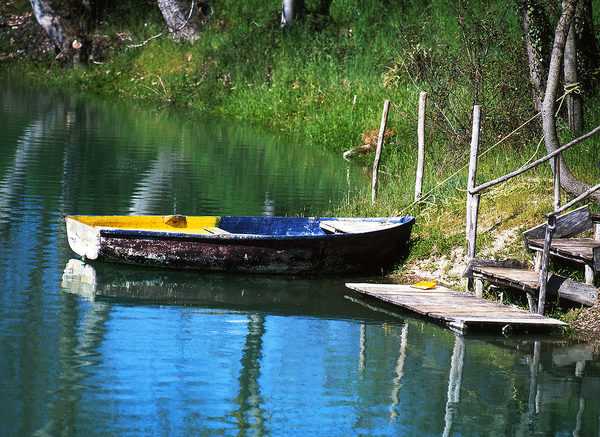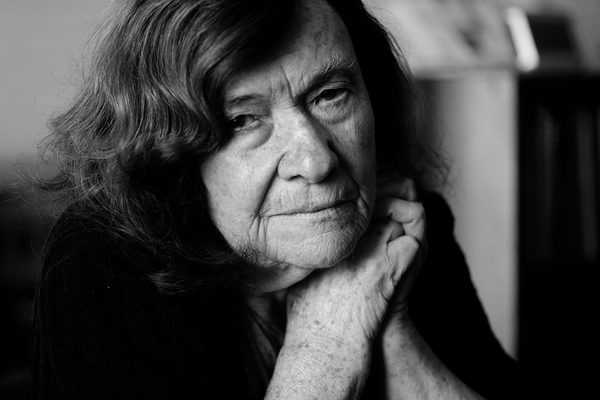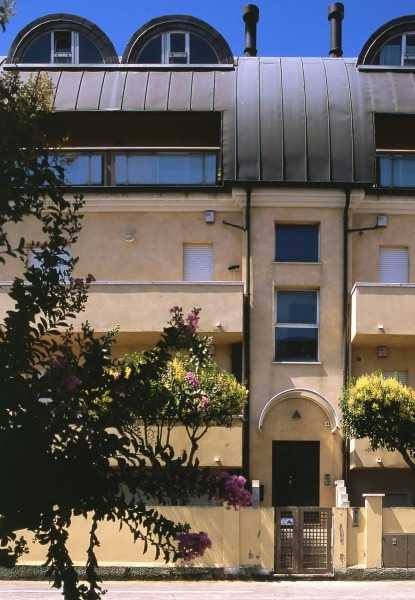Optical performance
Mamiya Sekor 55mm f1.4 features an optical design associated with the finest lenses in the vintage lens world, costing many times more than its price. People compare its rendering to the Carl Zeiss Contarex 55mm f1.4 and Carl Zeiss Jena Pancolar 55mm f1.4 – both excellent lenses, unfortunately, both way above my price range. I understand that there is an element of wishful thinking there, but these comparisons would not happen without merit, and the Mamiya Sekor 55mm f1.4 deserves the honour.
To some vintage lens enthusiasts, this is the one lens to rule them all. It has buckets of character (meaning flares, ghosts and spherical aberrations). Still, in the hands of the accustomed user, it can produce spectacular sharp, warm images with an authentic vintage feel.
Spherical aberration is strong when wide open at f1.4 – not a strong negative point. A creative photographer can use it for portraits or any other dreamy-looking photos. However, when stopped down – it is very sharp and resolves a lot of detail. This ‘soft when needed’ and ‘sharp when needed’ combination is a win, in my opinion. Just make sure you set the aperture accordingly.
Radioactive thorium in the lens elements gives this lens a “thorium glow” because the thoriated glass yellows with age, acting like a mild yellow filter. Although it is possible to clear it away by exposing the lens to UV light, I prefer the warm look.
Overall, I like the look of the photos it produces – those images pack the visual qualities and quirks I value.
Portrait was taken with Mamiya Sekor 55mm f1.4
Build and handling
Mamiya Sekor 55mm f1.4 is a solid lens made from quality metal parts and rare-earth glass. Nothing rattles inside when shaken, and everything feels tightly aligned and well-engineered.
Focussing is smooth, as one would expect from the brass helicoid. The aperture selection ring rotates smoothly with tactile clicks, allowing the setting of the half-stop apertures.
I love vintage lenses precisely for the above points – modern lenses lack these qualities, even the expensive ones.
Three Mamiya Sekor 55mm f1.4 lenses – Front view. Notice that yellow tint? Thats radioactive thorium glass.Three Mamiya Sekor 55mm f1.4 lenses – Angle viewThree Mamiya Sekor 55mm f1.4 lenses – Side viewThree Mamiya Sekor 55mm f1.4 lenses – Back view. It is really easy which rear elements have thorium in them.Three Mamiya Sekor 55mm f1.4 lenses – Rear elements at an angle.Mamiya Sekor 55mm f1.4 – Aperture blades
My road to the Mamiya Press system
 Mamiya Press Super 23 and Mamiya Universal Press nameplates
Mamiya Press Super 23 and Mamiya Universal Press nameplates
Several years ago, a coworker friend of mine bought an original Mamiya Press camera and brought it in to work so others and myself could take a look at it. I’d never seen a camera like it before, only recently having developed an interest in 35mm rangefinder cameras.
My only experience in medium format photography up to that point had been shooting a few rolls of 120 film through a Rolleiflex TLR. I enjoyed medium format photography but was still getting back into the film habit after having used digital cameras for a number of years, personally and professionally.
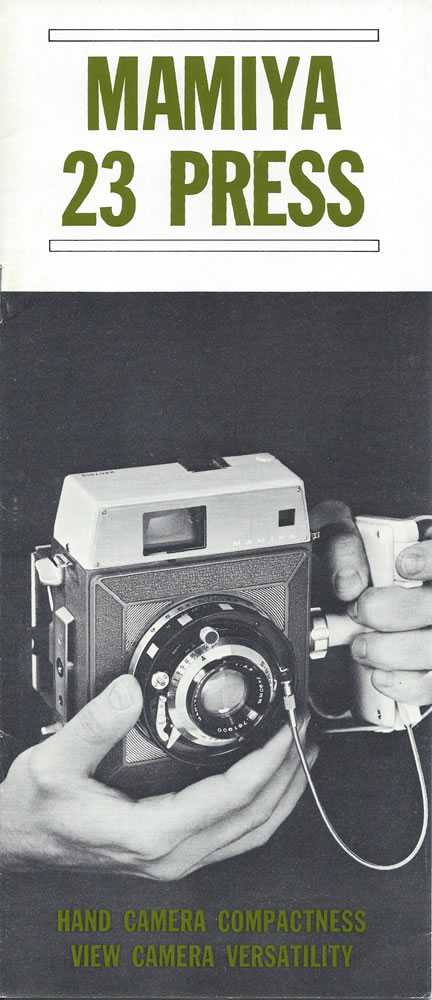 Mamiya 23 Press Sales Brochure
Mamiya 23 Press Sales Brochure
The Mamiya Press that my friend had purchased seemed very utilitarian in its appearance. It sat sort of squat and boxy, with a green-gray toned leather covering that almost made me think it was designed to be used in a jungle by some nation’s army. Hers was complete and solidly built. She explained that she had used one while she was attending university and wanted a camera of her own that that could take 6×9 images.
Not too long after that, I purchased my first medium-format camera, a Mamiya RB67. I loved using it, and still do, but like my friend, something appealed to me about using a camera that could capture an image larger than the 6×7 format of the RB.
In the middle of 2016, I had the opportunity to purchase a Mamiya Press Super 23 camera from the estate of a photographer who was the original owner of the camera. It was in great condition and came complete in its original packaging, with a 6×7 film back, 100mm f/3.5 lens, handle, and lens hood.
Unfortunately, after using the camera for a few test shots, I began to have shutter issues with the lens. I debated whether to send it out for repair but ultimately decided to replace it with an updated version of the same lens – one of the many great things about film photography is what was once expensive to acquire and own can now in many cases be had quite cheaply.
At the end of 2016, I purchased a Mamiya Universal Press body for the purpose of using an instant film back on it in order to make a “high end” instant camera. The Super 23 and Universal are more alike than they are different, yet both were designed to fulfil specific roles.
In the time that I’ve owned both, I’ve shot quite a few rolls (and packs of instant film) through them and am impressed by the quality of the lenses and size of the film negative; and find them easy to use for cameras from their era.
I will share with you the reasons I enjoy using this camera and perhaps you also might be inspired to pick one up and see for yourself how incredible these cameras are.
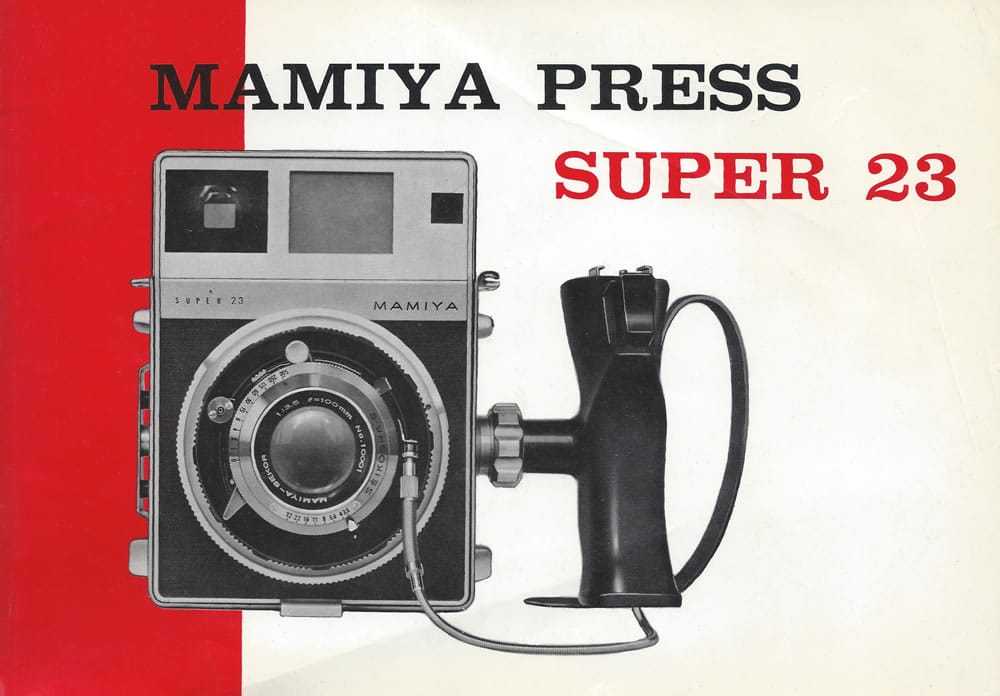 Mamiya Super 23 Manual Front Cover
Mamiya Super 23 Manual Front Cover
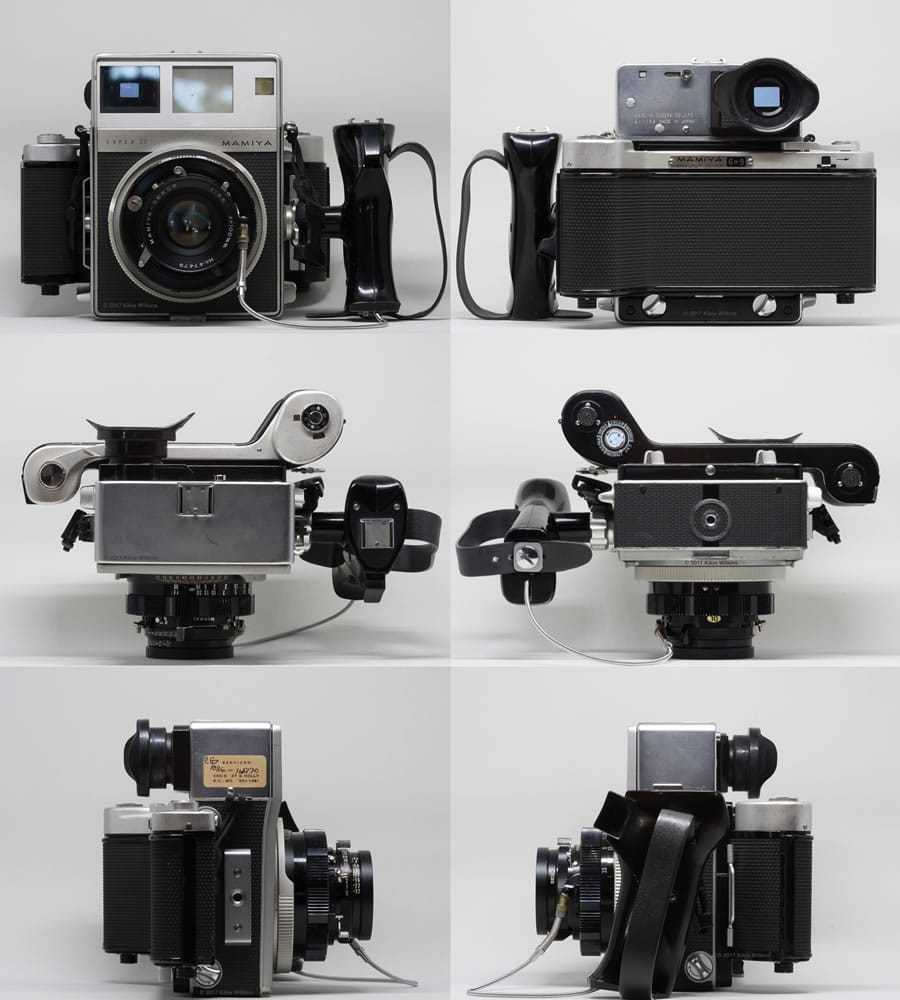 Mamiya Super 23 from all sides
Mamiya Super 23 from all sides
The images above are of my Super 23 with several attached components. With the exception of the lens and the carrying straps, the camera you see pictured is how it came new in the box. As mentioned previously, the original lens had some shutter issues. The pictured lens is an improved version of the original, chrome-faced 100mm f/3.5.
The Super 23 is a more refined version of the original Mamiya Press. The Mamiya Press has a more industrial and functional appearance than the Super 23, which I believe has a greater emphasis on aesthetics and appearance.
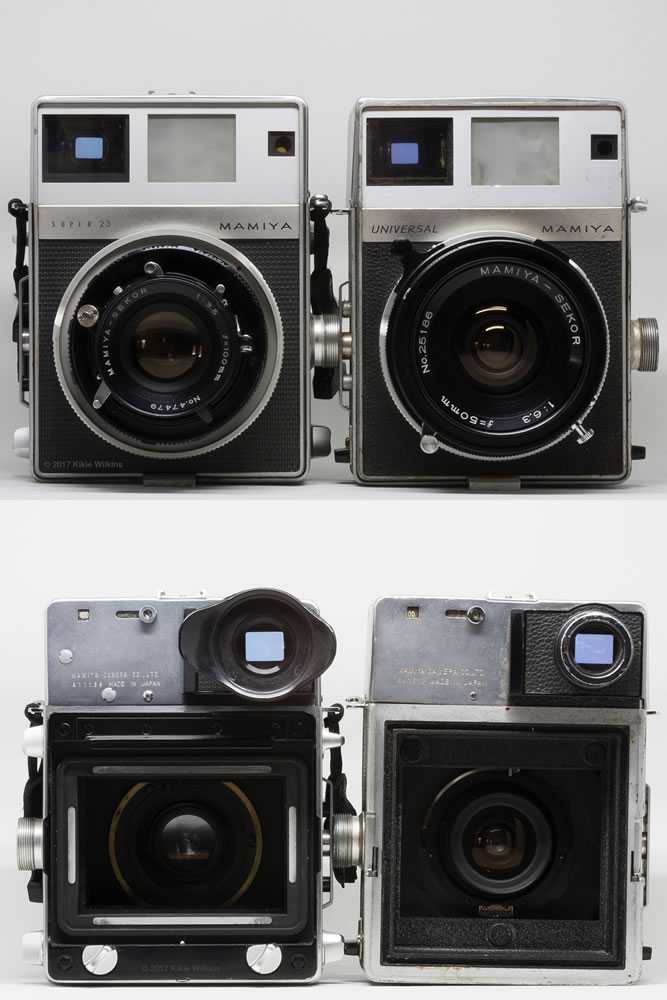 Front and back of Super 23 and Universal Press
Front and back of Super 23 and Universal Press
If you look closely at the leatherette on the Super 23’s body and film backs, instead of having a generic, pebbled finish there are actually tiny Mamiya “M’s” all over as the texture. It is a small detail when considering the entire camera, but speaks loudly to me of how the designers decided to devote resources to both form and function.
Mamiya 645
12.03.2015
Пофотографировал на среднеформатную плёночную фотокамеру Mamiya 645. Это мой первый опыт со среднеформатной плёнкой.
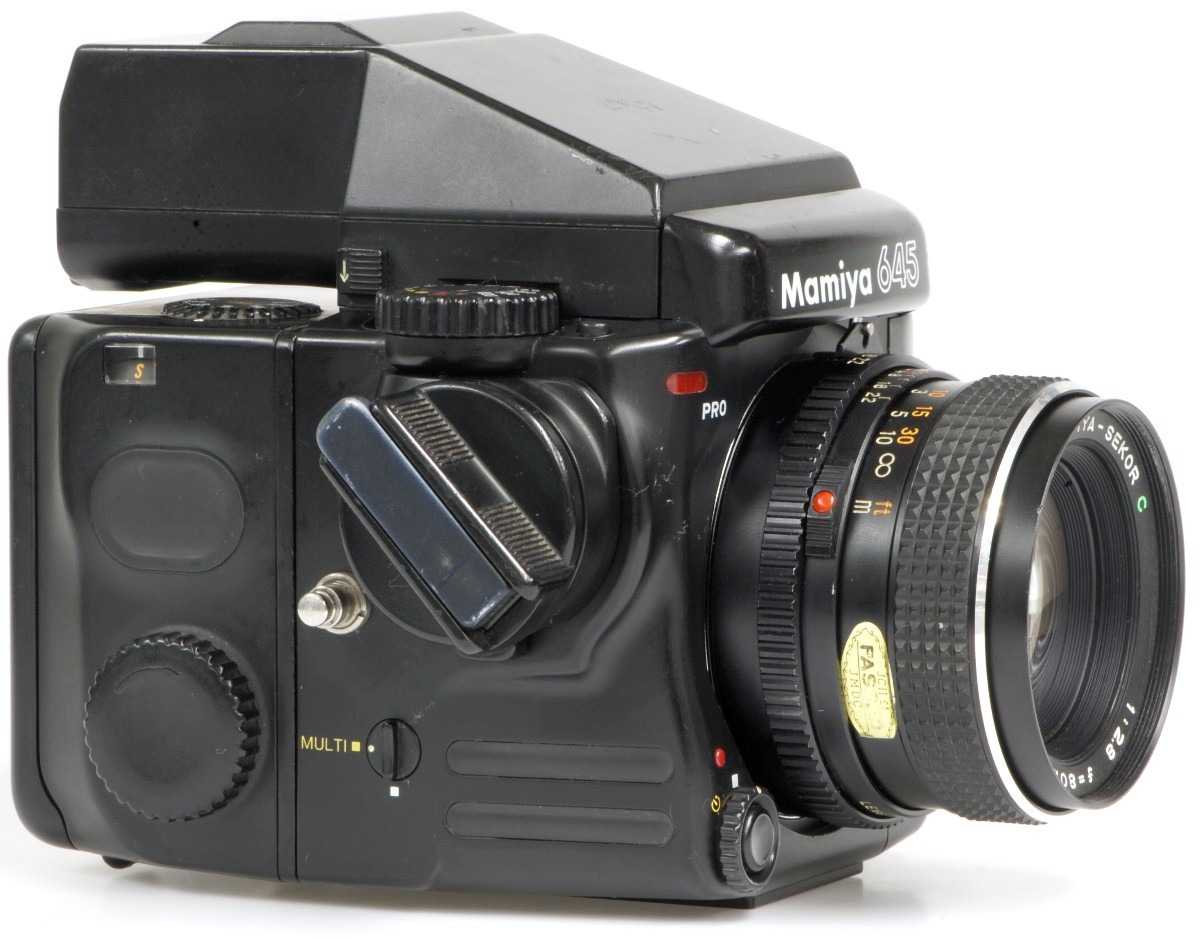
Mamiya 645 — это японская зеркальная камера, одна из популярных в своём классе. Она выпускалась дюжиной вариаций с 1975 года: механической, полуавтоматической, и даже в версии с цифровой матрицей.
Это необычная фотокамера. Если вы когда-нибудь имели опыт с обычной плёночной фотокамерой, то Mamiya есть чему вас удивить:
- Камера построена по модульному принципу. Объектив, зеркало, видоискатель и механизм для хранения плёнки не соединены друг с другом намертво, а могут разделяться и заменяться по отдельности. Это довольно удобно, учитывая стоимость камеры и любовь профессиональных фотографов к подгонке инструментов «под себя».
- Фотоаппарат большой (размером с кирпич) и тяжелый (весом с кирпич). Он оттягивает руку, в кармане его не спрячешь.
- У камеры всё отлично с эргономикой, хоть многое кажется непривычным. Так, кнопка спуска располагается на лицевой стороне, рядом с объективом.
Цифры 645 в названии камеры неспроста. Это размер кадра: 60 мм по горизонтали на 45 мм по вертикали (обычная камера снимает на плёнку размером 36 мм на 24 мм). Для среднеформатной камеры нужна специальная плёнка, тип 120 (или 220). Она выглядит необычно: тонкая и длинная катушка, на которую намотана какая-то чёрная бумажная полоска. Такую плёнку непросто вставить в камеру — нужно сделать дюжину манипуляций. Занятно то, что перематывать плёнку назад не нужно, она вся переходит на приёмную катушку. Можно смело вытаскивать, не боясь засветить. На плёнке 15 кадров, стоит она рублей 500. Недешевое удовольствие, одним словом.
- В камере всё продумано. Плёночный блок (его называют задником) отделён от блока с зеркалом специальными защёлками, которые нужно сначала оттянуть, а потом нажать. Заряженный блок не отделить, если в него не вставлена специальная заглушка, похожая на гильотину. Для самой заглушки при этом есть специальное место в торце задника. Не камера, а образец качественного промышленного дизайна.
- Фотоаппарат щёлкает зеркалом мощно и вкусно, диавол!
Собственно, а теперь — фотографии с камеры. Я отснял три катушки плёнки, и отобрал все более-менее получившиеся снимки. Привожу их как есть, без коррекции.
Я взял камеру у Александра просто попробовать, поиграть. В итоге она нам с А. так понравилась, что мы решили её приобрести. Будем вести свой семейный плёночный архив.
Compatibility and adaptors
Due to M42 mount, the Mamiya Sekor 50mm f2 is a very adaptable lens and works well with mirrorless and SLR cameras. However, mirrorless cameras gain an advantage because larger space between the sensor and the glass permits helicoid adapters.
Pixco Canon RF to M42 helicoid adapter provides close focussing and significantly increases magnification when it is needed. Switching between infinity and macro range on a whim is easy without adding any extension tubes – all it takes is a turn on the helicoid adapter ring. I ended up using it with every M42 lens because of the seamless flexibility that it offers.
Macro performance
The minimum focus distance is about 50cm, which does not allow enough magnification for macro photography on its own. Nonetheless, it is possible to improve that by using an adapter with a helicoid.
Macro performance of the Mamiya Sekor 50mm f2 is good – the images are well defined, but getting good shots is difficult. It is not a fast lens and needs further stopping down to increase sharpness, but that makes resultant apertures very small. The helicoid adapter also uses up a portion of the remaining light, making it tricky to use hand-held. Mamiya Sekor 58mm f1.7 or the Mamiya Sekor 55mm f1.8 are both noticeably better lenses for close-up photography.
Pine bud with Mamiya Sekor 50mm f2 and extension helicoid
PRICING
Cosmetic conditionRetail pricing for used equipment is heavily dependent on condition. When we determine condition, we will check equipment for cosmetic wear, paint scuffs, dings, small missing parts- things which do not necessarily affect the equipment in use, but will affect market pricing
Normal signs of use are not a problem: used equipment often has small amounts of paint or finish wear, and while we’ll make a note of it, it’s hardly disqualifying. Old or new, cameras are meant to be used- it’s OK if they look like it.
But with rare exceptions, we will generally not offer on equipment that looks very heavily used. To some extent, this is a subjective decision- but it includes equipment with very heavy paint or finish wear, deep scuffs and scrapes, heavy plastic smoothing or discolouration, and other similar conditions which don’t affect function but may disproportionately affect marketability. We don’t offer on equipment that shows signs of impact or heavy damage like casing cracks.
Cosmetic condition can also give hints as to the conditions equipment has lived through. Corrosion is a big one: if there is rust or oxidation present, that’s a sign that the equipment has seen substantial moisture exposure. We generally will not offer on equipment with corrosion, as it can be a sign of invisible damage to mechanisms or electronics.
MarketabilityJust like pricing for new equipment, used values are subject to the laws of supply and demand. For example: «kit» lenses- those sold packaged together with cameras- can also be bought separately for several hundred dollars brand new. However, the used market is overflowing with supply (they come with nearly every camera sold, after all) and used values for these lenses in even excellent condition will be a fraction of the new price.
Along the same lines, used equipment in «like new» condition is still used equipment: the values for resale will be at the upper end of the used spectrum, but they are no longer tethered to new pricing. No matter how light the use, a resold product isn’t new, and can’t command new pricing at retail.
Our offers take into account both condition and marketability. Some equipment is worth offering on, but we know it’ll sit around for months or years before the right person comes along; some will find a new home right away. As you might imagine, we’ll offer higher on the items that we believe will turn around more quickly. A lot of this is a matter of judgment and experience- it’s probably the most subjective part of our pricing process.
Offers on equipment for a less popular or declining system may be lower than similar equipment from a more current system. This is a judgment call based on our understanding of market trends, so please try not to take it personally!
Missing parts and minor repairsWe’re not a repair shop, but we do some work to ensure that the equipment we sell is in ready-to-shoot condition. That means replacing batteries, light seals, chargers, and small fittings. If equipment needs replacement parts, we will take this into account when we determine pricing. If we have parts in stock, it’s not a big deal- but if the equipment needs an unusual or hard-to-find part, it may remain unsellable for months while we source a replacement. This applies to interchangeable parts on film cameras (rewind knobs, battery doors, etc) and accessories for digital cameras. In some cases, the cost of sourcing replacement parts may exceed the retail value of the camera- this especially applies to things like rechargeable batteries and chargers. We will often not offer on digital cameras which are missing batteries or chargers for this reason.
On popular equipment in good condition, we offer at about 70% of our expected resale value; that number can vary for any of the reasons listed above. But you should know that while we may disagree on market potential, we’re not out to lowball you. All our pricing decisions are based on data and experience, and we’re happy to explain them to you as best we can.
Вега-12Б 90 mm f/ 2.8
Буква Б как бы ненавязчиво нам намекает на байонет «Б», он же Pentacon Six (среднеформатный объектив). Этот объектив может быть установлен на цифровую камеру 35мм, скажем, Canon. Вобщем может и на Никон, но мы не написали, какая у вас, так что я пишу про Canon, потому как сам такой адаптер недавно продал. Адаптеры такие пока без подтверждения фокуса, ну да оно не так и нужно при художественной съемке.
Вообще выигрыша от установки среднеформатного объектива на 35мм камеру не будет, но и ничего плохого. Лишнее световое пятно отрежется, светосила и фокусное не изменится.
Плюс это или минус — он дешевый (1500—2000руб). Рисунок называют «мягким», но по сути объектив «мягкий» на F2.8 просто откровенно мылит. Хотя можно и в этом найти свои плюсы.
Цифровые задники
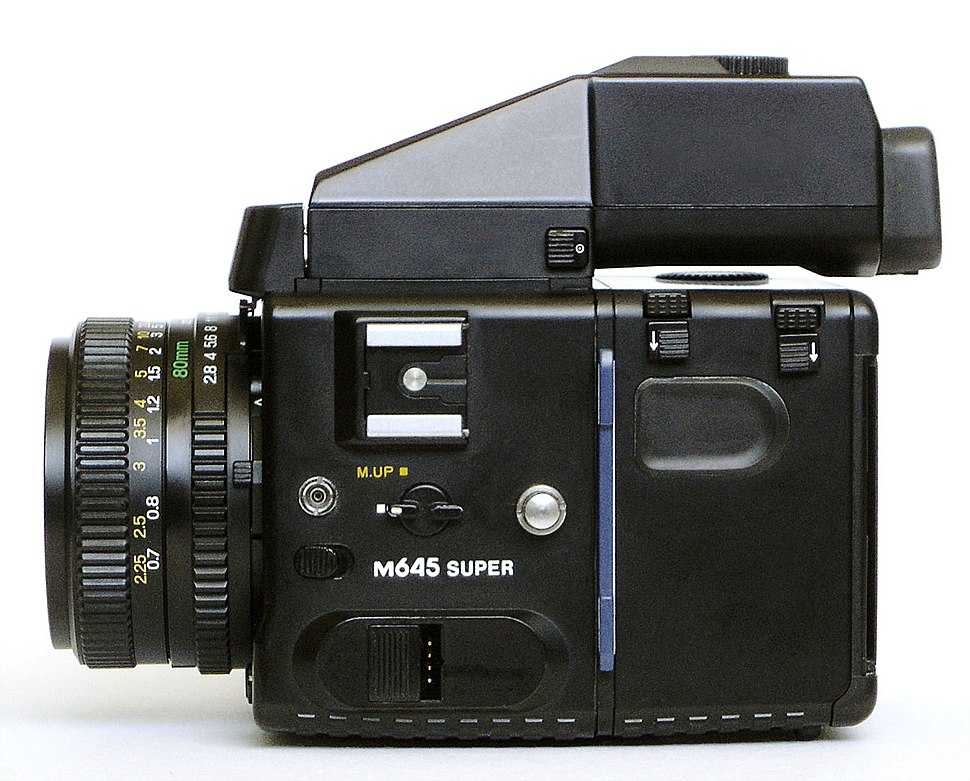
Плёночный Mamiya m645 super — прототип для Phase One 645AD
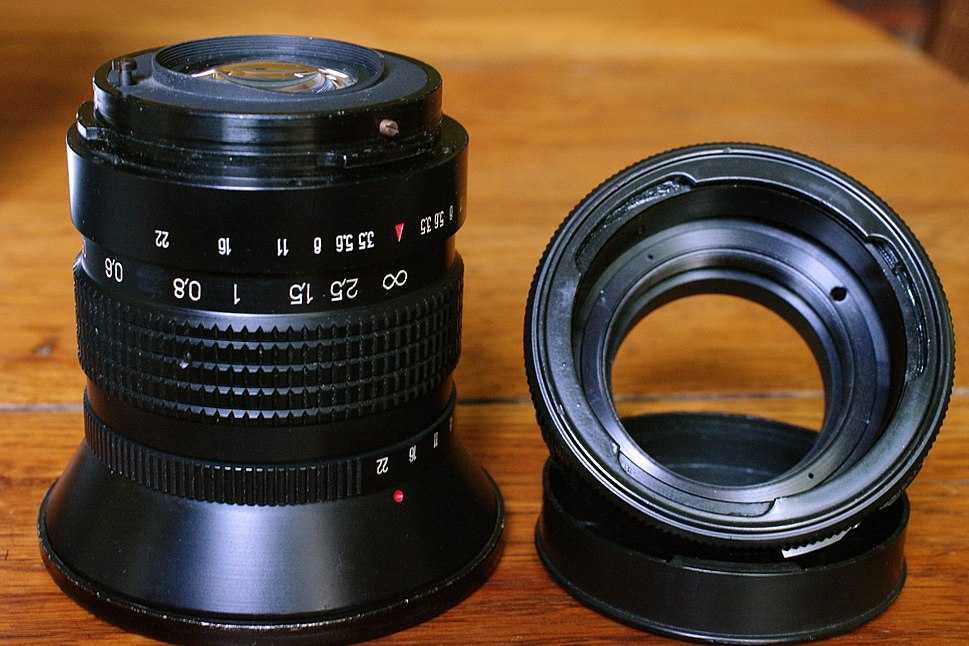
Pentacon Six
Mamiya 645:
- AF: размером 53,9×40,4 мм, разрешением 8984 × 6732 (60,5 Мпикс);
- DF: ПЗС-матрица размером 49,1×36,8 мм;
- DF LS поддерживает цифровые задники:
- P21 с размером ПЗС-матрицы 44,2×33,1 мм, разрешением 18 Мпикс;
- P25 с размером ПЗС-матрицы 48,9×36,7 мм, разрешением 5436 × 4080 (22 Мпикс);
- P30 с размером ПЗС-матрицы 44,2×33,1 мм, разрешением 6496 × 4872 (31,6 Мпикс);
- P40 с размером ПЗС-матрицы 43,9×32,9 мм, разрешением 7320 × 5484 (40 Мпикс);
- P45 с размером ПЗС-матрицы 49,1×36,8 мм, разрешением 7216 × 5412 (39 Мпикс);
- P65 с размером ПЗС-матрицы 53,9×40,4 мм, разрешением 8984 × 6732 (60,5 Мпикс);
- IQ140 с размером ПЗС-матрицы 44×33 мм, разрешением 7320 х 5484 (40 Мпикс);
- IQ160 с размером ПЗС-матрицы 53,9×40,4 мм, разрешением 8984 × 6732 (60,5 Мпикс);
- IQ180 с размером ПЗС-матрицы 53,9×40,4 мм, разрешением 10320 × 7752 (80 Мпикс);
- DF+ поддерживает цифровые задники Leaf, Mamiya, Phase One и Sinar, а комплектуется, на выбор, цифровыми задниками:
- Leaf Credo 40 Мпикс. (43,9 × 32,9 мм);
- Leaf Credo 60 Мпикс. (53,7 × 40,3 мм);
- Leaf Credo 80 Мпикс. (53,7 × 40,3 мм).
Camera Specifics
The Mamiya Press Super 23 is a medium format rangefinder camera styled for press work. Primarily designed for 120 roll film, it can take backs for 2×3 sheet film and various polaroid backs. For roll film, backs are available for 6×9, 6×7 and 6×4.5 formats. This body itself is a metal box with a rubber covering with little raised “M”s on it. There are black versions of the camera too, and some with more traditional coverings.
The lens mount is a unique Mamiya Press breech lock mount. The lenses themselves each have a Seikosha leaf shutter. The shutter release is on the lens and can vary in location. The camera is designed to be used with a left-hand grip, which incorporates a remote shutter release button. The handle is connected to the shutter release on lens by a remote cable.
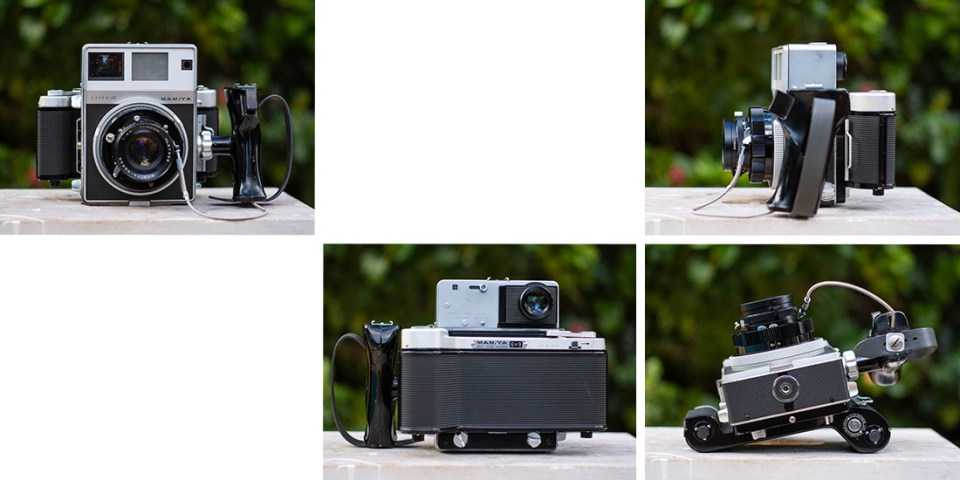
The handle also has a strap on it for better holding and it is attached to the body via a screw mechanism. Both the body and the handle have cold shoes attached at the top. On the right side of the camera is also a bracket for a flash gun.
The back of the camera has a switch at the top which allows you to select the viewfinder frame lines between 100mm, 150mm and 250mm. The viewfinder has parallax compensation and incorporates a circular rangefinder patch. Nice little touch is that it actually tells you which focal length it is set to in the viewfinder.
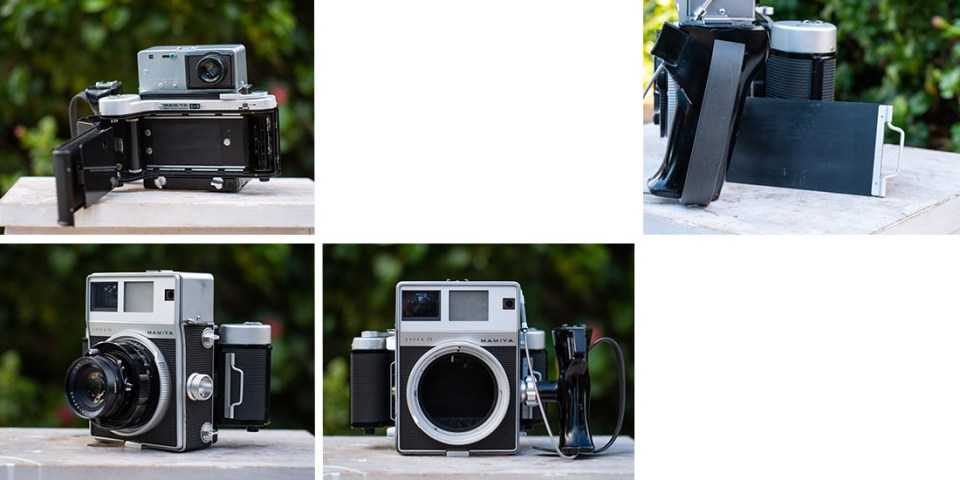
Lenses like the 65mm require an external viewfinder and this is placed on the cold shoe above the camera. This may introduce some parallax errors which would need correction.
The film back is unattached by unlocking the two locking knobs at the bottom. Film backs of various types mentioned earlier can be used, in the case of this copy it has a 6×9 roll film attached.
Film is loaded in the right-hand side and threaded to the left into a take up spool. The frame advance lever is on the right-hand side and uses quite a complicated mechanism to pull the film from the left-hand side. A film advance lock has to be flicked to allow the film to advance.
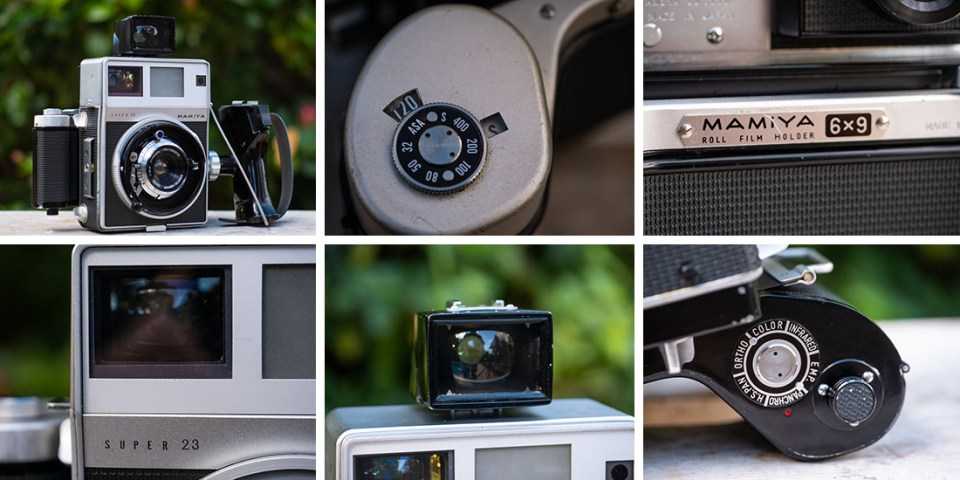
A dark slide has to be removed before shooting or inserted before changing lenses. Neither the film advance or the dark slide are interlocked with the shutter release, so care is required to avoid shooting double exposures or a blank frame.
Four locking knobs around the sides of the camera allow the back to be pulled out and the bellows to be extended. This can be used in conjunction with the ground glass attachment for some tilt and shift and even close focus for still life.

Under the camera is the film type reminder and the knobs to allow the film spool to be fit into the film back. These are both actually attached to the film back.
Underneath the camera itself is a regular tripod collar. Another feature on the camera is the neck strap eyelets on the sides, they allow for a regular neck strap.
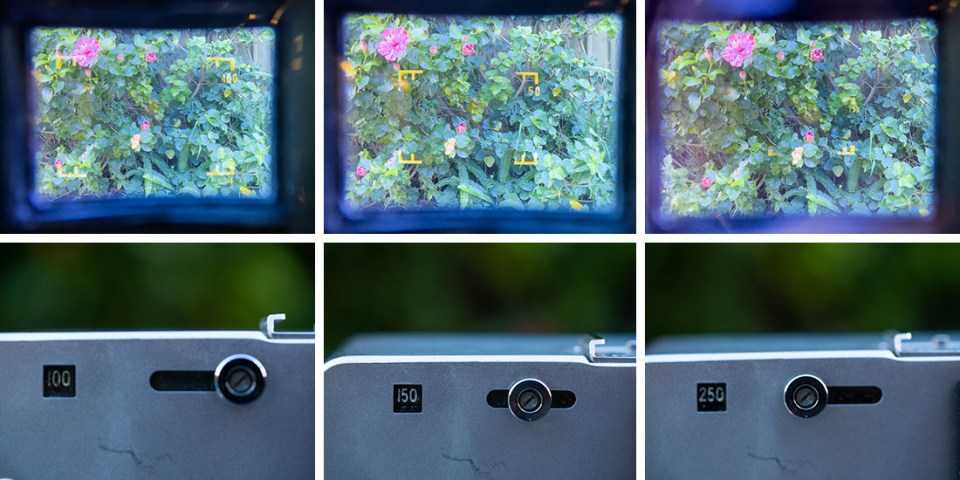
Mamiya Press Super 23 and Mamiya Universal Press – Physical comparisons
I’ve been fairly quiet on actual physical measurements of the Super 23 and Universal. I’m the kind of person where I can have physical dimensions and weight measurements of things and they don’t mean a lot to me unless I have something to compare them with. So, for comparative reference, I’ve photographed my Super 23 with another popular Mamiya camera, the RB67.
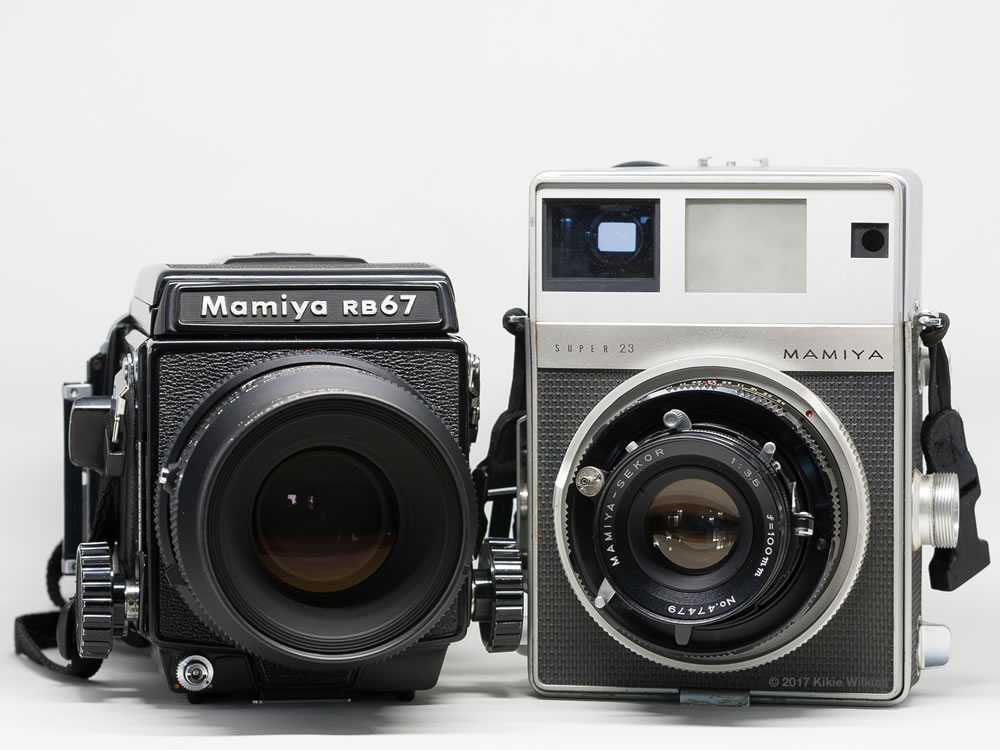 Front view of Mamiya RB67 and Super 23
Front view of Mamiya RB67 and Super 23
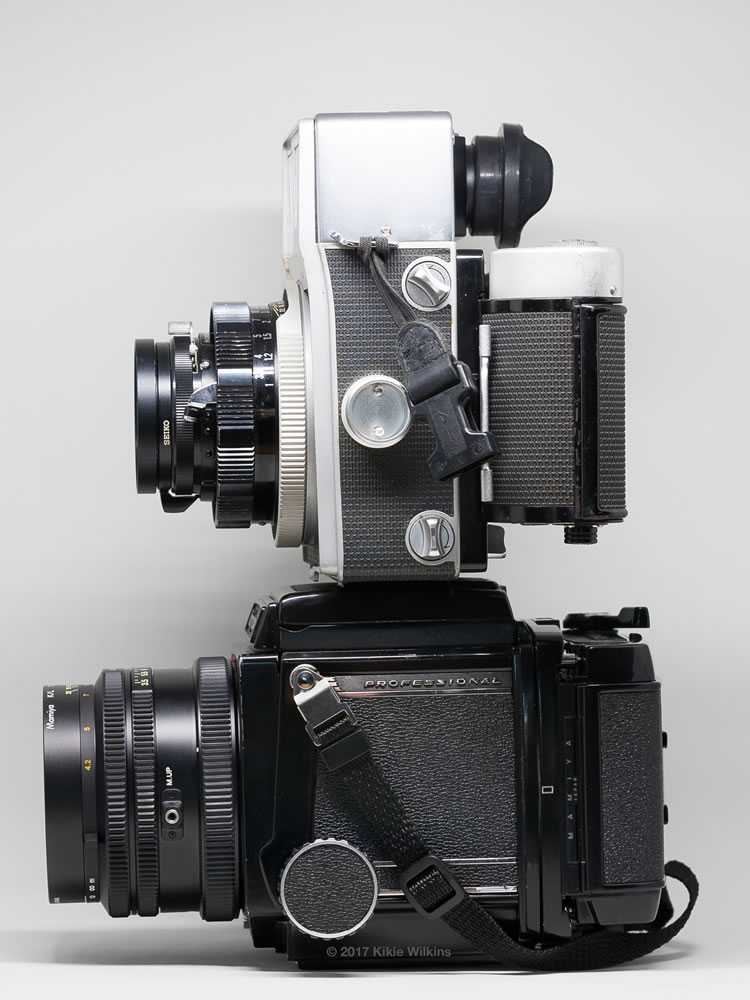 Side view of Mamiya RB67 and Super 23
Side view of Mamiya RB67 and Super 23
Also for your consideration, the Super 23 with a 35mm film cassette, a 35mm format Canon rangefinder (Canon P with 28mm lens and accessory viewfinder), and a 120 spool (remember, approximately 6.5cm in height).
 Canon P and Super 23 comparison
Canon P and Super 23 comparison
Sample photos
Sample landscape. The image at infinity is perfectly sharp even at a 1:1 zoom level.Evening scene. Not too many flares, but the sun was not too bright, as it was setting.I like how the background just melts away.
Mamiya Sekor 55mm f1.4 features an optical design associated with the finest lenses in the vintage lens world, costing many times more than its price. People compare its rendering to the Carl Zeiss Contarex 55mm f1.4 and Carl Zeiss Jena Pancolar 55mm f1.4 — both excellent lenses, unfortunately, both way above my price range. I understand that there is an element of wishful thinking there, but these comparisons would not happen without merit, and the Mamiya Sekor 55mm f1.4 deserves the honour.
To some vintage lens enthusiasts, this is the one lens to rule them all. It has buckets of character (meaning flares, ghosts and spherical aberrations). Still, in the hands of the accustomed user, it can produce spectacular sharp, warm images with an authentic vintage feel.
Spherical aberration is strong when wide open at f1.4 — not a strong negative point. A creative photographer can use it for portraits or any other dreamy-looking photos. However, when stopped down — it is very sharp and resolves a lot of detail. This ‘soft when needed’ and ‘sharp when needed’ combination is a win, in my opinion. Just make sure you set the aperture accordingly.
Radioactive thorium in the lens elements gives this lens a thorium glow because the thoriated glass yellows with age, acting like a mild yellow filter. Although it is possible to clear it away by exposing the lens to UV light, I prefer the warm look. Overall, I like the look of the photos it produces — those images pack the visual qualities and quirks I value.»
}
}
Конкуренты
Фотоаппараты (полнокадровые) не представляют реальную конкуренцию из-за серьёзных различий в покупательском сегменте. Тем более, что из его прямых конкурентов среди цифровых фотоаппаратов (среднеформатных зеркальных) на 2013 год было всего трое: и -серий и Pentax 645D, она самая студийная (системная), так как построена на среднеформатной плёночной зеркальной системе Mamiya 645. Основная конкуренция разворачивается за покупателя, решающего между тем, чтобы купить цифровой задник к своей системе, чтобы её «оцифровать» или купить новый в полном сборе. Фотоаппарат совместим с объективами Hasselblad V Series (через адаптер), что позволяет владельцам плёночных фотокамер этого производителя безболезненно перейти на цифровой фотоаппарат за меньшие деньги.
Ссылки
Phase One — датская компания, специализирующаяся на выпуске высококлассного фотооборудования и программного обеспечения для работы с фотоиллюстрациями. Основной продукцией являются цифровые задники для среднеформатных фотоаппаратов с разрешением до 150 мегапикселей, и операционные системы для них. Не менее широкую известность получил графический редактор Capture One Pro, предназначенный для работы с фотографиями в формате RAW. Приложение поддерживает обработку «сырых» файлов практически всех известных цифровых фотоаппаратов. В 2007 году Phase One заключила соглашение с японской компанией Mamiya о разработке совместного продукта, представляющего собой цифровой зеркальный фотоаппарат с большой матрицей. Первая модель проектировалась на основе выпускавшейся с 1975 года аналоговой камеры «Mamiya 645». Результатом стало новое семейство «Mamiya 645D», которое маркируется также «Phase One 645D», в зависимости от маркетинговых особенностей целевого рынка. В 2015 году консорциум представил новую фотосистему XF, которую позиционирует как открытую платформу, совместимую с принадлежностями разных брендов. Одним из самых дорогих представителей семейства стал фотоаппарат «Phase One XF 100MP» с задником IQ3 разрешением 100 мегапикселей.
Кроп-фактор (от англ. Crop factor, crop — обрезать, factor — множитель) — условный коэффициент, отражающий изменение поля зрения объектива при его использовании с кадровым окном уменьшенного размера. Эта величина появилась одновременно с цифровой фотографией и чаще всего интерпретируется, как виртуальное увеличение фокусного расстояния оптики, рассчитанной на малоформатный кадр фотоплёнки при использовании фотоматрицы меньшего размера. Физический смысл кроп-фактора можно описать отношением диагонали стандартного кадра к диагонали используемого.
Kf{\displaystyle K_{f}} = диагональ35мм / диагональматрица (диагональ малоформатного кадра 24×36 мм ≈ 43,3мм)
Таким образом, кроп-фактор «полнокадровой» матрицы, соответствующей размерам малоформатного кадра, равен единице. В практической фотографии кроп-фактор не может быть меньше единицы, поскольку использование кадра размеров, превышающих расчётные, приводит к виньетированию. Кроп-фактор служит только в качестве справочной величины и никак не влияет на действительное фокусное расстояние объективов, зависящее от их оптической конструкции.
Среднеформатные цифровые фотоаппараты — класс цифровых фотоаппаратов, обладающий матрицей среднего формата.
В отличие от плёночных среднеформатных фотокамер, формат плёнок для которых стандартизирован, размеры матрицы в цифровых среднеформатных фотоаппаратах устанавливает производитель по своему усмотрению, поэтому средний цифровой формат — формат матрицы больший, чем полнокадровая матрица (соответствует стандартному формату плёнки для малого формата).
Фотографи́ческий затво́р — устройство для регулирования выдержки, то есть длительности воздействия света на фотоматериал или матрицу фотоаппарата. Один из двух основных инструментов управления экспозицией. В киносъёмочном аппарате роль фотозатвора выполняет обтюратор.
Цифровой зеркальный фотоаппарат, DSLR (англ. Digital single-lens reflex camera) — цифровой фотоаппарат, построенный на основе принципа однообъективной зеркальной камеры, использовавшегося в плёночной фотографии. Понятие цифрового зеркального фотоаппарата подразумевает однообъективную схему, поскольку двухобъективная в цифровой фотографии широкого применения не нашла.
|
|
| Fujifilm GFX 50s |
Verdict
This is a super lens. It does not have a vintage rendering but as a person that likes vintage rendering — I still like it a lot. It’s almost clinical but doesn’t reach the boring nature of clinical rendering. It still has some character within. If you are a «vintage lens till I die» fan — it might be best if you stayed clear. Otherwise I would keep an eye on this lens.
Sometimes lenses can give a special, magical rendering that makes it obvious that a certain lens was used to take a photo. This isn’t one of those lenses. And you don’t want all the lenses to be like that. There is always a need for a precise tool that gives very predictable results. But still has some uniqueness to it — however small it may be.
Whilst not the easiest to find — this lens is still quite cheap. I don’t know of a better deal in this focal length for TLR cameras. And even other medium format cameras.
It’s not all perfect. The weight and size of the lens makes the TLR harder to use. You won’t be throwing it around your neck and having a brisk walk. Slight weight training will benefit the wearer of a TLR with this lens.
Older versions of this lens are slightly cheaper but the super Super-Sekor version isn’t much more expensive so I would try to get the super version. I do think that it’s the most super of all the versions although I have not shot older ones.
Super!
Photos taken with Mamiya Sekor 80 mm f/2.8
|
RCE
|
The sample photos are selected automatically between all photos posted by JuzaPhoto members, using the camera and the lens selected in the techs. If you find evident errors (e.g. photos taken with cameras and lenses that are not available yet), you can contribute to improve the page by sending a private message to the user that has entered incorrect values in the photo caption.
Reviews » Lenses » Lenses Varie » Mamiya Sekor 80 mm f/2.8



























